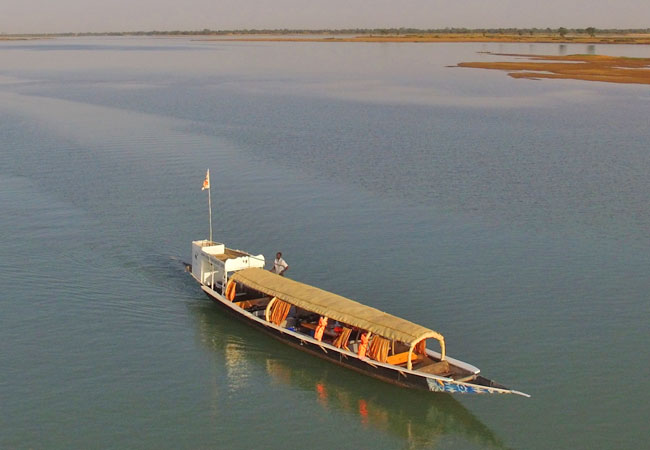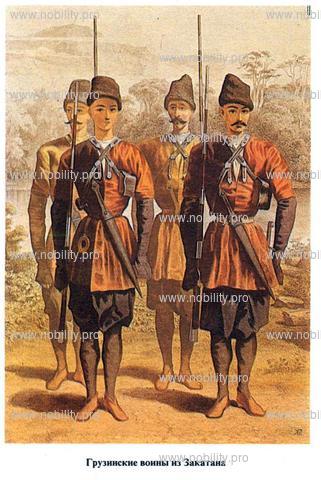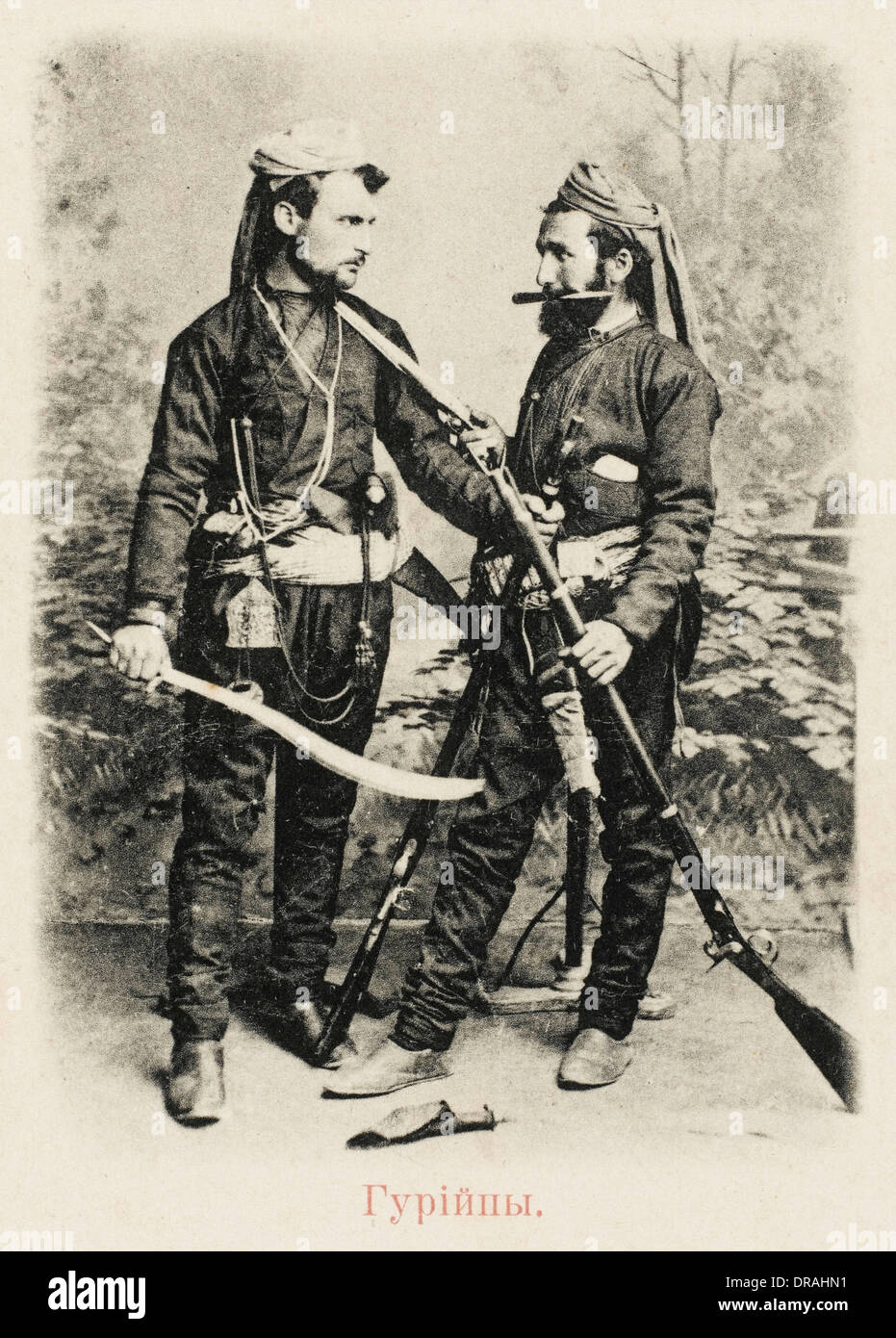The Caucasus is actually extremely diverse when it comes to different cultures. It is a linguist's nightmare/holy grail, with seemingly more diversity than European continent (note that the map is actually simplified, and often shows language families rather than actual languages - for instance, in our region of interest, the monolithic Georgian is actually a regional-specific mix of titular Georgian, Megrelian, Svan and Laz):
What you're discussing now is dark yellow part, mostly located in modern Georgia. Due to the nature of the region, outside of genocides by external powers, the ethnic composition of the Caucasus was fairly conservative across the ages, as common for mountainous regions all over the globe. As such, we might talk of "Georgians" in that part with a fair amount of certainty dating back roughly to 5th century, and in the loose sense of "peoples speaking a Kartvelian-family language" the continuity is there back to the first attested states. OTOH, there was little political continuity, with the region being usually divided into several entities, often dependent on larger surrounding powers. The usual major powers in the Georgian region throughout history were Rome/Eastern Rome, Arabs, Persians, Turks and Russians. What does that give us in practice?
Ancient/Classical: Unlike the Armenian part of the region, which has attested Bronze-age statehood, the first known states appear around VIII BC, and are Colchis (known to Romans as Lazica) and Kartli (confusingly Iberia to Romans). Two fairly stable polities that were for sizeable chunks of their history Roman and Persian dependencies respectively. Both were Christianized (in IV and VI AD respectively), both later fell to Arab conquest, though retained their identity and mostly their religion. After a brief direct rule by Arabs, we proceed to...
Medieval: Abkhazia (somewhat confusingly, since modern Abkhazia, while nominally territory of Georgia, is a non-Georgian speaking de-facto independent state) and Iberia again (called Bagratid Iberia to distinguish it from the earlier one), then united into kingdom of Georgia, which is the furthest extent of Georgian statehood and the only pre-modern case of all Georgian peoples being unified under one political entity (also incorporating large bits inhabited by other Caucasian peoples at its highest extent around XII century). That lasted for roughly 400 years, with a 100-year pause for Mongols. Post-Mongol Georgia, reconstituted at almost original extent for a short while, was quickly picked at by encroaching emerging powers (Ottomans and Persians mostly) and disintegrated into three parts from within (Samtskhe, Imereti and Kakheti as three major parts, along with minor principalities), constantly at each others' throats. Which brings us to...
Renaissance: where independent political Georgian entities cease to exist, and the region becomes a two-way tug of war between Ottomans and Persians, later joined by the third player, Russia. Until XX century, there are no politically independent Georgian states, but rather Ottoman, Persian and Russian vassals, with various powers having the upper hand at various times. Eventually, Russia won most of the region, and by XIX century, Georgian nobility is a part of the Russian court (one of the major Russian commanders in the Napoleonic wars, prince Bagration, is, for instance, a member of the Georgian royal house; while I can't immediately find the data to back it up, IIRC ethnic Georgians were the third most prominent component of Russian imperial nobility after ethnic Russians and Poles).
Industrial: here we have a rather brief Georgian independence post-WW1, which lasted a couple of years, after which it becomes the Georgian SSR within the USSR.
Modern: modern Georgia begins in 1991 with the fall of the union, and generally at this point covers all of Georgian-speaking territory with an Armenian-majority region in the south as well, disputed between the two states (currently in a cold albeit civil manner, but featuring a Georgian-Armenian war in their first period of independence post-WW1).
As such, the hardest part to source - as with most of Caucasus - is the post-medieval era, where no independent policies are available. The rough lineup of reference pics for units, Ancient/Classical excluded since you already have those:
Medieval Georgia:
As one can easily see, the heavier troops are mostly Byzantine-inspired, while lighter ones have a distinct local flavour.
Renaissance:
Generally speaking, one has to remember what I wrote above regarding the lack of independent Georgian polities throughout the period - this means that those are not standing armies, but rather essentially militias. As such, prominent elements of national costumes (of various Georgian sub-ethnicities) and clearly archaic elements are very prominent.
Industrial:
Due to its short-lived nature, the Georgian republic's army mostly used surplus Russian WW1 uniforms (lower pic), but the upper pic (Osprey IIRC) shows what is an attempt to mould a national uniform out of Russian parts.
Georgian Legion was formed by Nazis in WW2, but IIRC wasn't trusted enough for frontline duties, so was shipped off to France, and apart from shoulder badges they would be using German uniforms anyway. The Soviet army never had any ethnic parts, so there are no examples of Georgian-specific Soviet troops to be had.






 Although, there is a minor problem. The plane doesn't show up in the bottom left of the interface. I swapped the vanilla bombers material into your unit, and also renamed the Trishape to "Editable Mesh@#1" from the previous "Cube". That fixed it.
Although, there is a minor problem. The plane doesn't show up in the bottom left of the interface. I swapped the vanilla bombers material into your unit, and also renamed the Trishape to "Editable Mesh@#1" from the previous "Cube". That fixed it.






























 Walter is a historian.
Walter is a historian.